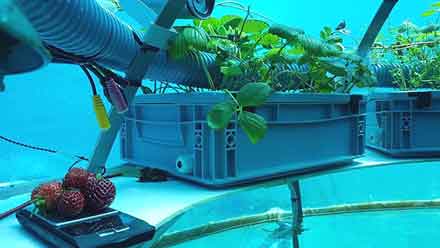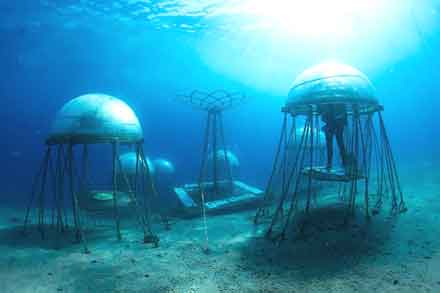Underwater Farming explained
Read here how useful is underwater farming
Published Date - 19 July 2021, 09:56 PM
Industrial agriculture is struggling to meet the needs of a rapidly growing population. And decades of intensive farming has taken a heavy toll on the environment. An over-reliance on pesticides, displacement of wildlife, the wasting of gallons of water and the generation of harmful emissions are damaging our world. Read here how useful is underwater farming…
 Scientists and entrepreneurs are hoping underwater farming could address these issues by growing crops under the ocean, eliminating the need for pesticides, while also reducing water use and carbon emissions. Indeed, the UN estimates the world could easily be fed if we used just 2% of the oceans for sustainable farming.
Scientists and entrepreneurs are hoping underwater farming could address these issues by growing crops under the ocean, eliminating the need for pesticides, while also reducing water use and carbon emissions. Indeed, the UN estimates the world could easily be fed if we used just 2% of the oceans for sustainable farming.
Boosting sustainability
Aquaculture has long been used to grow and harvest foodstuffs such as seafood, but several companies are now looking at ways of farming traditional crops such as strawberries and herbs under the sea.
Nemo’s Garden is an underwater farming project consisting of six air-filled plastic pods, or biospheres, anchored at the bottom of the sea off the coast of Noli, Italy.
How it works
The plastic pods are suspended at different depths – from between 4.5 to 11 metres – below the water’s surface, and each is equipped with sensors to measure carbon dioxide and oxygen levels; humidity, air temperature and illumination.

Plastic Pods
Created by diving company Ocean Reef Group in 2012, the project has already yielded everything from tomatoes, to courgettes, beans, mushrooms, lettuce, orchids and aloe vera plants using hydroponic techniques.
This means that plants are grown, without soil, in a nutrient-rich solution to deliver water and minerals to their roots, in a controlled environment.
No pesticides needed
Each dome is equipped with seedbeds and a 10-metre spiral tube. Irrigation water and fertilizer are kept in a tank at the lowest part of the spiral, and are delivered to the plants using a pump.
All these functions can be controlled from an above-water control tower, which is also fitted with solar panels that control a fan in each biosphere to reduce humidity on the plants.
Growing crops underwater also benefits the environment by eliminating the need for pesticides as no pests can enter the pods unless they are introduced.
A sustainable seaweed solution
In Namibia, Kelp Blue has been granted environmental clearance to start the underwater farming of seaweed crops that can be harvested for fertilizers, textiles and pharmaceuticals off the country’s coast.
Kelp is one of the fastest-growing organisms on the planet. It helps create habitats for many marine species and can be sustainably and repeatedly harvested for at least seven years.
The seaweed is also a very efficient carbon sink, with the company aiming to capture millions of tonnes of CO2 a year by 2050.
Sustainable farming
- Industrialised farming is taking its toll on the environment.
- The UN estimates that the world could easily be fed if just 2% of oceans were used for sustainable farming
- Underwater agriculture eliminates need for pesticides, reduce water use and cut carbon emissions
Now you can get handpicked stories from Telangana Today on Telegram everyday. Click the link to subscribe.
Click to follow Telangana Today Facebook page and Twitter .